
The brown-headed cowbird male is glossy black, with a chocolate-brown head and dark eye. Female is gray brown with few distinguishing marks. To identify the female, note the size, bill, and body shape, but the biggest clue is the association with the more easily identified males. The song is a gurgled series of notes. The call is a high-pitched, two-note whistle and a harsh, stuttering rattle.
Similar species: The bronzed cowbird has been an accidental winter visitor in the northwest part of the state. Primarily a southwestern species, it has red eyes and a larger bill, and the brown hood of the male extends farther onto the back. None of Missouri’s other blackbirds and grackles have males with black bodies and chocolate-brown heads.
Length: 7½ inches.
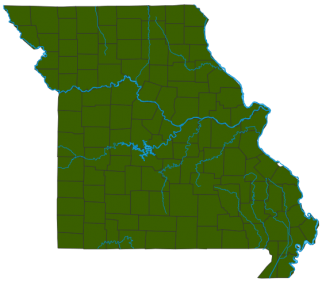
Common summer resident. Uncommon winter resident, with only a few birds wintering in northern Missouri.
Habitat and Conservation
Common summer resident often seen on lawns, parks, mowed roadsides, pastures, and among livestock in fields and feedlots. Cowbirds require open areas for foraging but lay their eggs in the nests of forest-dwelling birds. As large, unbroken tracts of forests are cut up and developed, several species of forest birds, including warblers, vireos, and others, are exposed to cowbirds and end up raising cowbird young instead of their own. This contributes to declines in those birds’ populations.
Food
Forages on the ground, often with other blackbirds and starlings, for insects and for grass and weed seeds on lawns, parks, mowed roadsides, and pastures. They are common among livestock in fields and feedlots. Cowbirds accompany cattle, sometimes perching atop their backs, in order to catch grasshoppers, beetles, and other insects flushed out by the browsing bovines. Before cattle were introduced to America, cowbirds accompanied bison.
Status
Originally a grassland species centered in the Great Plains, cowbirds have benefited from the carving up of previously unbroken woodlands, finding the many grassland/forest borders perfect for their lifestyle. Their numbers and range have increased greatly as people have created openings in woods. Although some birds can recognize and reject cowbird eggs in their nests, many more cannot. Bird species that are declining or endangered are especially threatened by cowbirds’ nest parasitism.
Life Cycle
Cowbirds are brood parasites, laying eggs in the nests of other birds to be raised by the host parents. Female cowbirds locate nests of other birds and lay eggs singly by those of the host. The baby cowbird hatches first and grows fast, monopolizing the care of its foster parents, getting more food and often leading to the death of its nest mates—sometimes smothering them or pushing them out of the nest. Once grown, they join passing cowbird flocks. The host parents must try another brood.
Human Connections
Anthropomorphism is putting human feelings and judgments on nonhuman subjects, as when we think of cowbirds as shady, nefarious nest robbers. Scientists reject such moralizing and strive for objectivity. They can see that it is human settlement that has cleared the way for cowbirds’ expansion.
Ecosystem Connections
In Missouri, cowbirds stop laying eggs in July, so multibrooded host species that lose early broods to them can sometimes raise a late-summer brood successfully. But when cowbirds parasitize migrant birds, which can only raise one brood a year, it can quickly lead to long-term population declines.



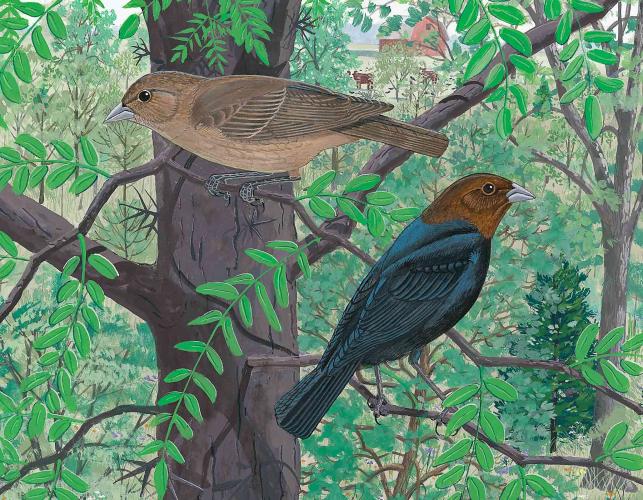


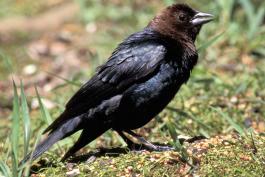

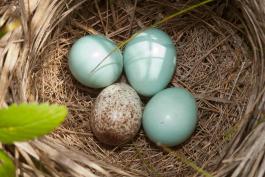


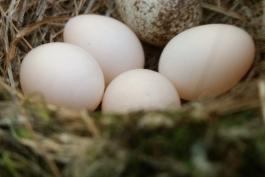
About 350 species of birds are likely to be seen in Missouri, though nearly 400 have been recorded within our borders. Most people know a bird when they see one — it has feathers, wings, and a bill. Birds are warm-blooded, and most species can fly. Many migrate hundreds or thousands of miles. Birds lay hard-shelled eggs (often in a nest), and the parents care for the young. Many communicate with songs and calls.





















